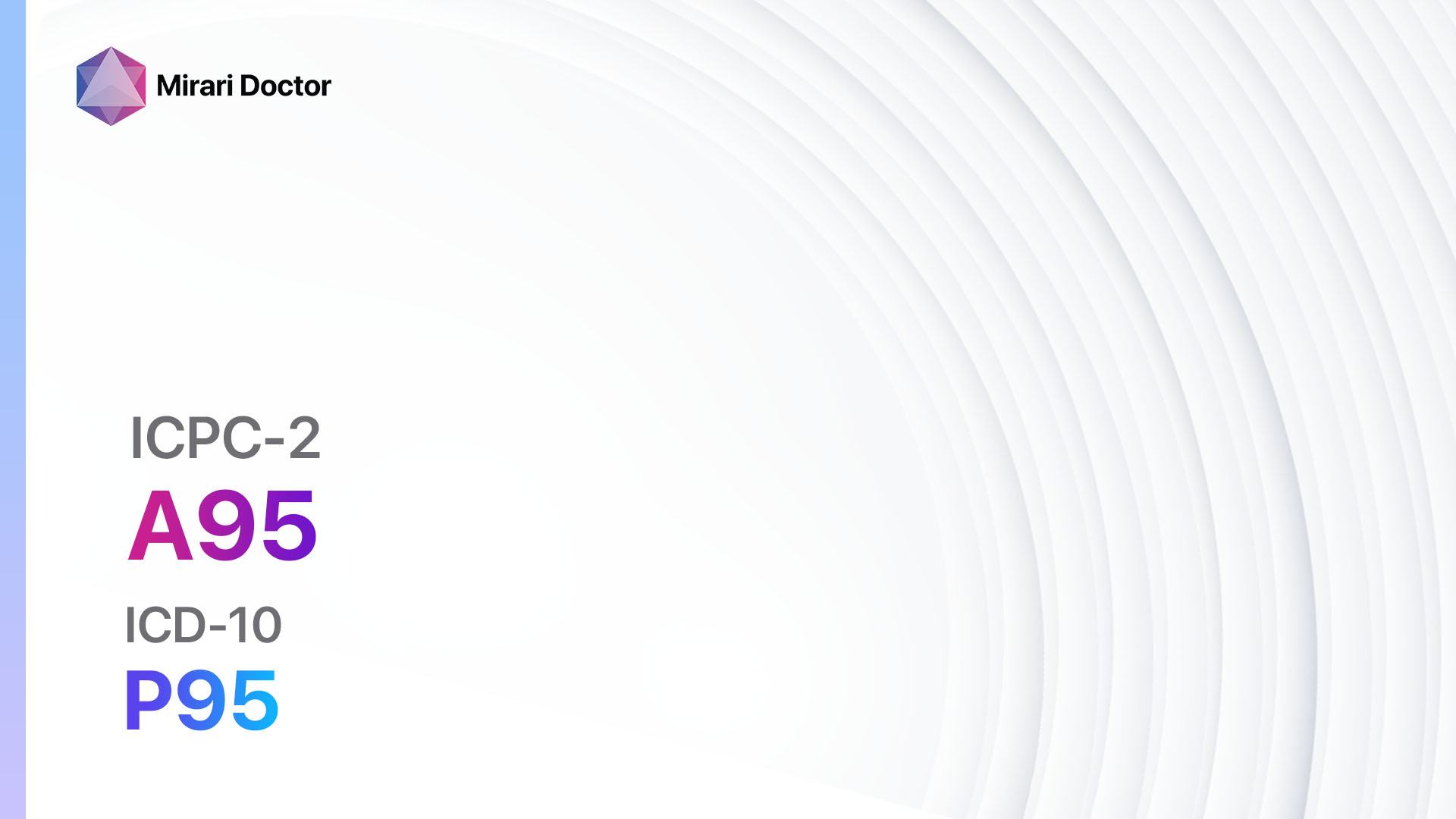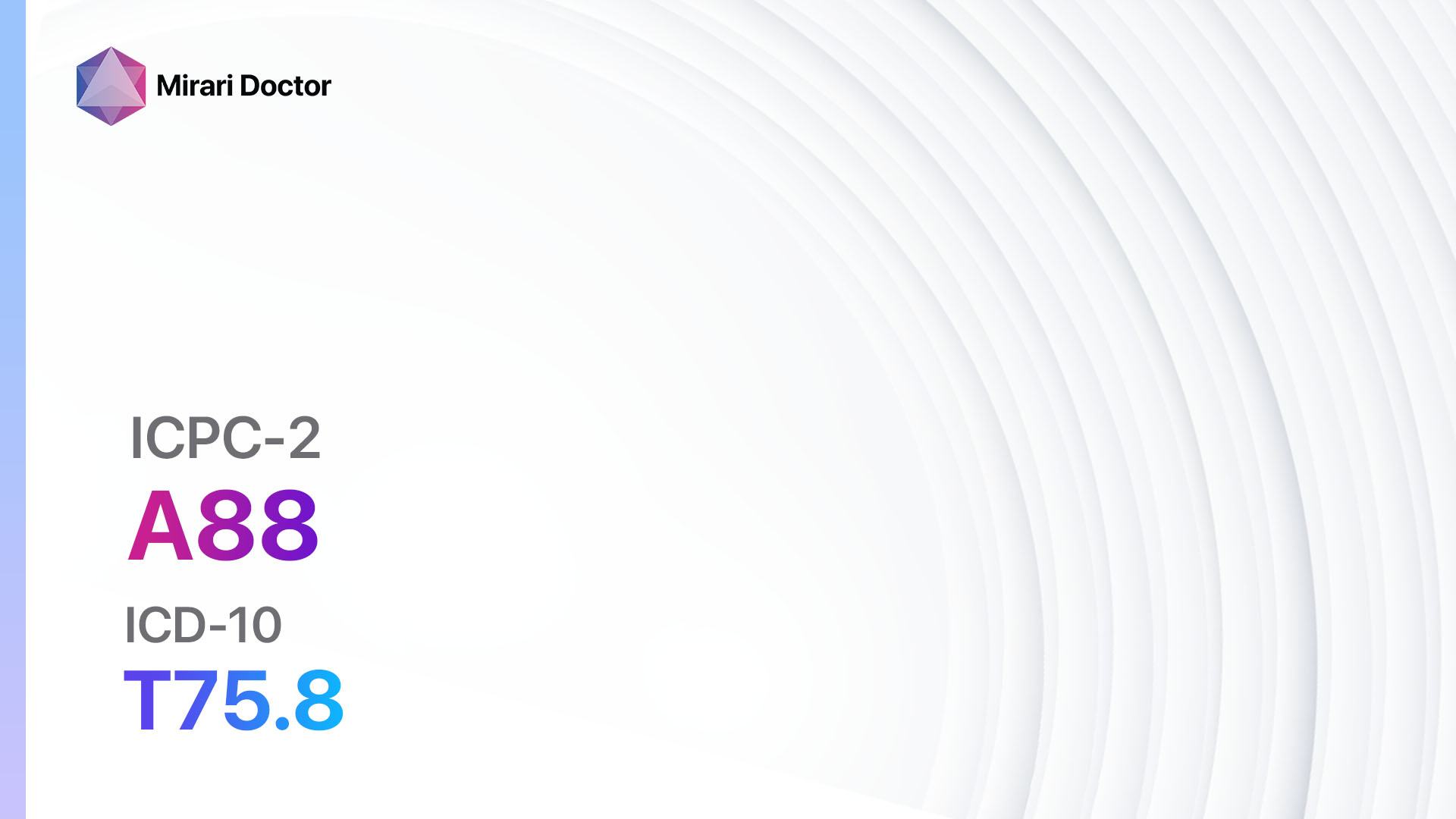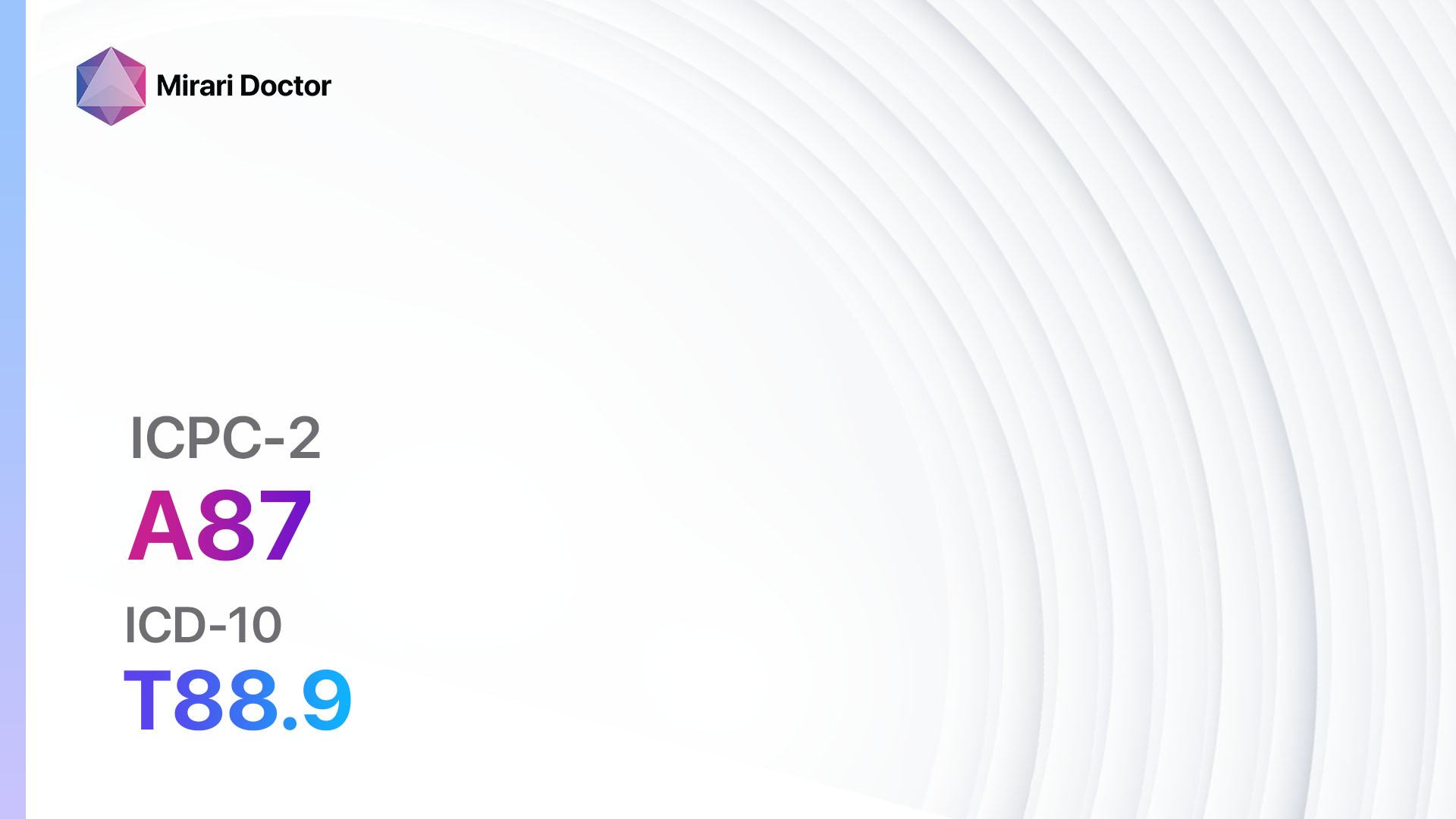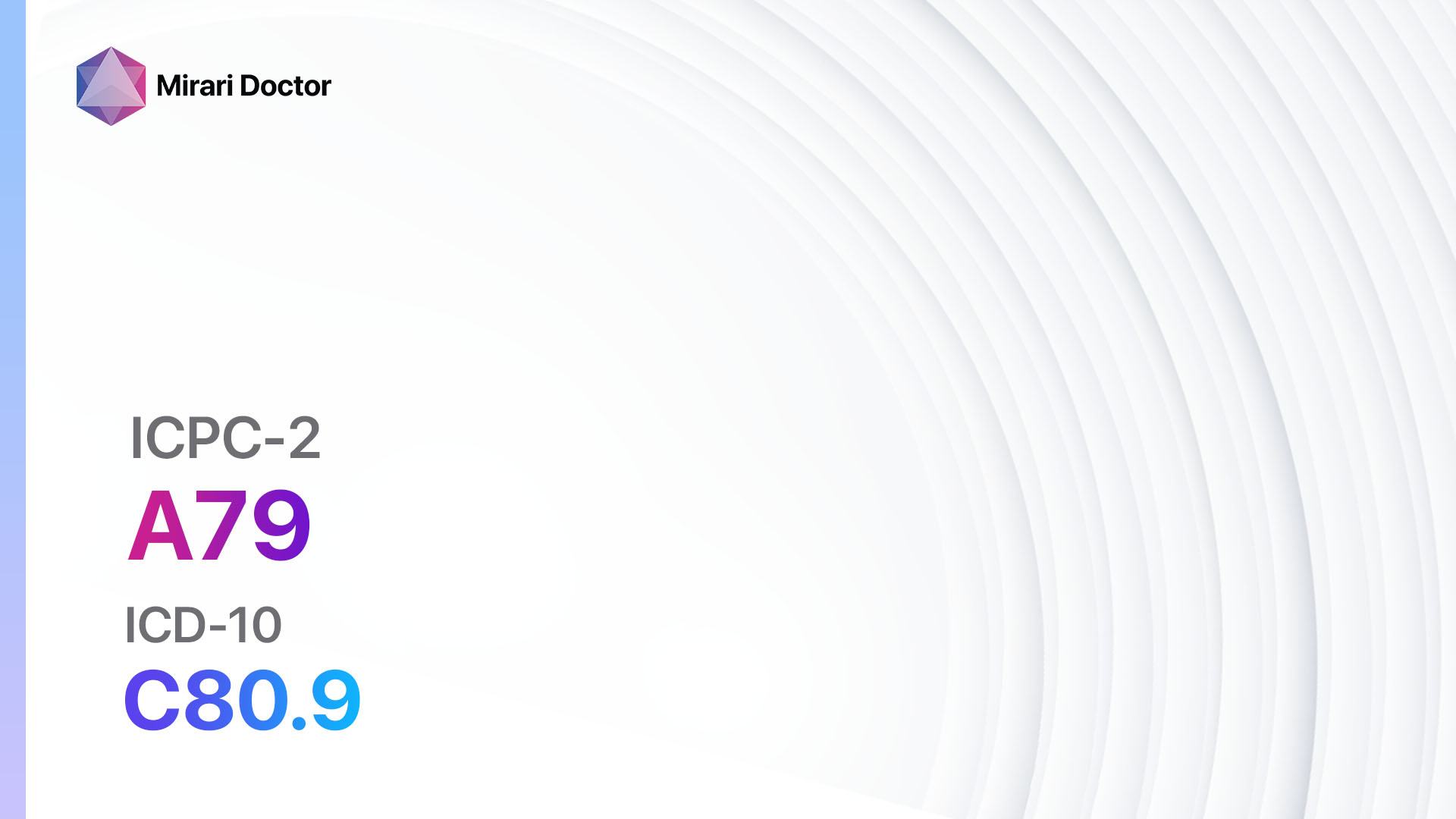
Introduction
Fear of death or dying is a common psychological condition that can significantly impact an individual’s quality of life[1]. It is characterized by persistent and excessive fear or anxiety related to the concept of death or the process of dying. This guide aims to provide healthcare professionals with a comprehensive approach to diagnosing and managing fear of death/dying.
Codes
Symptoms
- Preoccupation with death or dying[3]
- Intense fear or anxiety when thinking about death[4]
- Avoidance of situations or conversations related to death[5]
- Physical symptoms such as rapid heartbeat, sweating, and shortness of breath when confronted with death-related stimuli[6]
- Intrusive thoughts or nightmares about death[7]
- Impaired daily functioning due to fear of death[8]
Causes
- Personal experiences with death, such as the loss of a loved one[9]
- Traumatic events or near-death experiences[10]
- Existential or philosophical concerns about the meaning of life and death
- Cultural or religious beliefs about death
- Underlying mental health conditions, such as anxiety disorders or depression
Diagnostic Steps
Medical History
- Conduct a detailed medical history to understand the patient’s background, including any past experiences with death or traumatic events.
- Explore the patient’s cultural or religious beliefs about death and dying.
- Assess for any underlying mental health conditions, such as anxiety disorders or depression.
Physical Examination
- Perform a general physical examination to rule out any physical causes of anxiety symptoms.
- Pay attention to vital signs, as fear of death can sometimes manifest with physical symptoms such as rapid heartbeat or shortness of breath.
Laboratory Tests
- No specific laboratory tests are required for the diagnosis of fear of death/dying. However, if the patient presents with physical symptoms, it may be necessary to perform blood tests to rule out any underlying medical conditions.
Diagnostic Imaging
- Diagnostic imaging is not typically necessary for the diagnosis of fear of death/dying.
Other Tests
- No other specific diagnostic tests are required for the diagnosis of fear of death/dying. However, additional psychological assessments may be conducted to evaluate the severity of the condition and its impact on the patient’s daily life.
Follow-up and Patient Education
- Schedule regular follow-up appointments to monitor the patient’s progress and adjust the treatment plan if necessary.
- Provide patient education materials or resources about coping strategies for fear of death/dying, such as relaxation techniques or support groups.
Possible Interventions
Traditional Interventions
Medications:
Top 5 drugs for Fear of death/dying:
- Selective Serotonin Reuptake Inhibitors (SSRIs) (e.g., Sertraline, Fluoxetine):
- Cost: Generic versions can be $10-$50/month.
- Contraindications: Hypersensitivity to SSRIs, concurrent use of monoamine oxidase inhibitors (MAOIs).
- Side effects: Nausea, headache, insomnia.
- Severe side effects: Serotonin syndrome, suicidal thoughts.
- Drug interactions: MAOIs, other serotonergic medications.
- Warning: May take several weeks to achieve full therapeutic effect.
- Benzodiazepines (e.g., Alprazolam, Diazepam):
- Cost: Generic versions can be $10-$30/month.
- Contraindications: Acute narrow-angle glaucoma, concurrent use of opioids.
- Side effects: Sedation, dizziness, confusion.
- Severe side effects: Respiratory depression, dependence.
- Drug interactions: Opioids, alcohol.
- Warning: Risk of dependence and withdrawal symptoms with long-term use.
- Beta-blockers (e.g., Propranolol, Atenolol):
- Cost: Generic versions can be $10-$30/month.
- Contraindications: Severe bradycardia, heart block.
- Side effects: Fatigue, dizziness, bradycardia.
- Severe side effects: Bronchospasm, heart failure.
- Drug interactions: Calcium channel blockers, insulin.
- Warning: Should not be abruptly stopped.
- Antidepressants (e.g., Venlafaxine, Mirtazapine):
- Cost: Generic versions can be $10-$50/month.
- Contraindications: Hypersensitivity to antidepressants, concurrent use of MAOIs.
- Side effects: Nausea, drowsiness, weight gain.
- Severe side effects: Serotonin syndrome, suicidal thoughts.
- Drug interactions: MAOIs, other serotonergic medications.
- Warning: May take several weeks to achieve full therapeutic effect.
- Antipsychotics (e.g., Quetiapine, Risperidone):
- Cost: Generic versions can be $10-$50/month.
- Contraindications: Hypersensitivity to antipsychotics, dementia-related psychosis.
- Side effects: Sedation, weight gain, extrapyramidal symptoms.
- Severe side effects: Neuroleptic malignant syndrome, tardive dyskinesia.
- Drug interactions: Other antipsychotics, medications that prolong QT interval.
- Warning: Increased risk of mortality in elderly patients with dementia-related psychosis.
Alternative Drugs:
- Buspirone: An anxiolytic medication that can be used as an alternative to benzodiazepines. Cost: $10-$30/month.
- Hydroxyzine: An antihistamine with anxiolytic properties. Cost: $10-$30/month.
- Pregabalin: An anticonvulsant medication used for anxiety disorders. Cost: $50-$100/month.
- Gabapentin: Another anticonvulsant medication with anxiolytic effects. Cost: $10-$50/month.
- Propranolol: A beta-blocker that can be used specifically for performance anxiety. Cost: $10-$30/month.
Psychological Interventions:
- Cognitive-Behavioral Therapy (CBT): A form of psychotherapy that helps individuals identify and change negative thought patterns and behaviors associated with fear of death/dying. Cost: $100-$200 per session.
- Exposure Therapy: A type of CBT that involves gradually exposing the individual to death-related stimuli to reduce anxiety. Cost: $100-$200 per session.
- Mindfulness-Based Stress Reduction (MBSR): A meditation-based program that helps individuals develop awareness and acceptance of their fears and anxieties. Cost: $100-$200 per session.
- Support Groups: Joining a support group with individuals who share similar fears and anxieties about death can provide a sense of community and understanding. Cost: Varies depending on the organization or location.
Alternative Interventions
- Acupuncture: May help reduce anxiety and promote relaxation. Cost: $60-$120 per session.
- Yoga: Combines physical postures, breathing exercises, and meditation to promote relaxation and reduce anxiety. Cost: $10-$20 per class.
- Meditation: A practice that involves focusing the mind and eliminating the stream of thoughts to achieve a mentally clear and emotionally calm state. Cost: Free to practice at home or $10-$20 per guided session.
- Herbal Supplements: Some herbal supplements, such as valerian root or passionflower, may have calming effects. Cost: Varies depending on the specific supplement.
- Massage Therapy: Manipulation of soft tissues to promote relaxation and reduce anxiety. Cost: $50-$100 per session.
Lifestyle Interventions
- Regular Exercise: Engaging in physical activity can help reduce anxiety and improve overall well-being. Cost: Varies depending on the chosen activity (e.g., gym membership, home workout equipment).
- Healthy Diet: Consuming a balanced diet rich in fruits, vegetables, whole grains, and lean proteins can support overall mental health. Cost: Varies depending on individual food choices.
- Stress Management Techniques: Practicing stress management techniques such as deep breathing exercises, progressive muscle relaxation, or journaling can help reduce anxiety. Cost: Free to practice at home.
- Quality Sleep: Establishing a regular sleep routine and ensuring adequate sleep can improve overall mental health. Cost: Free to practice at home.
- Avoidance of Substance Abuse: Avoiding or limiting the use of alcohol, caffeine, and recreational drugs can help manage anxiety symptoms. Cost: Varies depending on individual choices.
It is important to note that the cost ranges provided are approximate and may vary depending on the location and availability of the interventions. It is recommended to consult with healthcare professionals or insurance providers for accurate cost information.
Mirari Cold Plasma Alternative Intervention
Understanding Mirari Cold Plasma
- Safe and Non-Invasive Treatment: Mirari Cold Plasma is a safe and non-invasive treatment option for various skin conditions. It does not require incisions, minimizing the risk of scarring, bleeding, or tissue damage.
- Efficient Extraction of Foreign Bodies: Mirari Cold Plasma facilitates the removal of foreign bodies from the skin by degrading and dissociating organic matter, allowing easier access and extraction.
- Pain Reduction and Comfort: Mirari Cold Plasma has a local analgesic effect, providing pain relief during the treatment, making it more comfortable for the patient.
- Reduced Risk of Infection: Mirari Cold Plasma has antimicrobial properties, effectively killing bacteria and reducing the risk of infection.
- Accelerated Healing and Minimal Scarring: Mirari Cold Plasma stimulates wound healing and tissue regeneration, reducing healing time and minimizing the formation of scars.
Mirari Cold Plasma Prescription
Video instructions for using Mirari Cold Plasma Device – A25 Fear of death/dying (ICD-10:Z71.8)
| Mild | Moderate | Severe |
| Mode setting: 1 (Infection) Location: 7 (Neuro system & ENT) Morning: 15 minutes, Evening: 15 minutes |
Mode setting: 1 (Infection) Location: 7 (Neuro system & ENT) Morning: 30 minutes, Lunch: 30 minutes, Evening: 30 minutes |
Mode setting: 1 (Infection) Location: 7 (Neuro system & ENT) Morning: 30 minutes, Lunch: 30 minutes, Evening: 30 minutes |
| Mode setting: 2 (Wound Healing) Location: 7 (Neuro system & ENT) Morning: 15 minutes, Evening: 15 minutes |
Mode setting: 2 (Wound Healing) Location: 7 (Neuro system & ENT) Morning: 30 minutes, Lunch: 30 minutes, Evening: 30 minutes |
Mode setting: 2 (Wound Healing) Location: 7 (Neuro system & ENT) Morning: 30 minutes, Lunch: 30 minutes, Evening: 30 minutes |
| Mode setting: 7 (Immunotherapy) Location: 1 (Sacrum) Morning: 15 minutes, Evening: 15 minutes |
Mode setting: 7 (Immunotherapy) Location: 1 (Sacrum) Morning: 30 minutes, Lunch: 30 minutes, Evening: 30 minutes |
Mode setting: 7 (Immunotherapy) Location: 1 (Sacrum) Morning: 30 minutes, Lunch: 30 minutes, Evening: 30 minutes |
| Total Morning: 45 minutes approx. $7.50 USD, Evening: 45 minutes approx. $7.50 USD |
Total Morning: 90 minutes approx. $15 USD, Lunch: 90 minutes approx. $15 USD, Evening: 90 minutes approx. $15 USD, |
Total Morning: 90 minutes approx. $15 USD, Lunch: 90 minutes approx. $15 USD, Evening: 90 minutes approx. $15 USD, |
| Usual treatment for 7-60 days approx. $105 USD – $900 USD | Usual treatment for 6-8 weeks approx. $1,890 USD – $2,520 USD |
Usual treatment for 3-6 months approx. $4,050 USD – $8,100 USD
|
 |
|
Use the Mirari Cold Plasma device to treat Fear of death/dying effectively.
WARNING: MIRARI COLD PLASMA IS DESIGNED FOR THE HUMAN BODY WITHOUT ANY ARTIFICIAL OR THIRD PARTY PRODUCTS. USE OF OTHER PRODUCTS IN COMBINATION WITH MIRARI COLD PLASMA MAY CAUSE UNPREDICTABLE EFFECTS, HARM OR INJURY. PLEASE CONSULT A MEDICAL PROFESSIONAL BEFORE COMBINING ANY OTHER PRODUCTS WITH USE OF MIRARI.
Step 1: Cleanse the Skin
- Start by cleaning the affected area of the skin with a gentle cleanser or mild soap and water. Gently pat the area dry with a clean towel.
Step 2: Prepare the Mirari Cold Plasma device
- Ensure that the Mirari Cold Plasma device is fully charged or has fresh batteries as per the manufacturer’s instructions. Make sure the device is clean and in good working condition.
- Switch on the Mirari device using the power button or by following the specific instructions provided with the device.
- Some Mirari devices may have adjustable settings for intensity or treatment duration. Follow the manufacturer’s instructions to select the appropriate settings based on your needs and the recommended guidelines.
Step 3: Apply the Device
- Place the Mirari device in direct contact with the affected area of the skin. Gently glide or hold the device over the skin surface, ensuring even coverage of the area experiencing.
- Slowly move the Mirari device in a circular motion or follow a specific pattern as indicated in the user manual. This helps ensure thorough treatment coverage.
Step 4: Monitor and Assess:
- Keep track of your progress and evaluate the effectiveness of the Mirari device in managing your Fear of death/dying. If you have any concerns or notice any adverse reactions, consult with your health care professional.
Note
This guide is for informational purposes only and should not replace the advice of a medical professional. Always consult with your healthcare provider or a qualified medical professional for personal advice, diagnosis, or treatment. Do not solely rely on the information presented here for decisions about your health. Use of this information is at your own risk. The authors of this guide, nor any associated entities or platforms, are not responsible for any potential adverse effects or outcomes based on the content.
Mirari Cold Plasma System Disclaimer
- Purpose: The Mirari Cold Plasma System is a Class 2 medical device designed for use by trained healthcare professionals. It is registered for use in Thailand and Vietnam. It is not intended for use outside of these locations.
- Informational Use: The content and information provided with the device are for educational and informational purposes only. They are not a substitute for professional medical advice or care.
- Variable Outcomes: While the device is approved for specific uses, individual outcomes can differ. We do not assert or guarantee specific medical outcomes.
- Consultation: Prior to utilizing the device or making decisions based on its content, it is essential to consult with a Certified Mirari Tele-Therapist and your medical healthcare provider regarding specific protocols.
- Liability: By using this device, users are acknowledging and accepting all potential risks. Neither the manufacturer nor the distributor will be held accountable for any adverse reactions, injuries, or damages stemming from its use.
- Geographical Availability: This device has received approval for designated purposes by the Thai and Vietnam FDA. As of now, outside of Thailand and Vietnam, the Mirari Cold Plasma System is not available for purchase or use.
References
- Iverach, L., Menzies, R. G., & Menzies, R. E. (2014). Death anxiety and its role in psychopathology: Reviewing the status of a transdiagnostic construct. Clinical Psychology Review, 34(7), 580-593.
- Menzies, R. E., & Menzies, R. G. (2020). Death anxiety in the time of COVID-19: Theoretical explanations and clinical implications. The Cognitive Behaviour Therapist, 13, e19.
- World Health Organization. (2018). International classification of primary care, second edition (ICPC-2).
- Menzies, R. E., Zuccala, M., Sharpe, L., & Dar-Nimrod, I. (2021). Toward an understanding of death anxiety: A systematic review of measurement and prevalence. Death Studies, 45(10), 753-768.
- Neimeyer, R. A., Wittkowski, J., & Moser, R. P. (2004). Psychological research on death attitudes: An overview and evaluation. Death Studies, 28(4), 309-340.
- Menzies, R. E., & Menzies, R. G. (2020). Death anxiety in the time of COVID-19: Theoretical explanations and clinical implications. The Cognitive Behaviour Therapist, 13, e19.
- Iverach, L., Menzies, R. G., & Menzies, R. E. (2014). Death anxiety and its role in psychopathology: Reviewing the status of a transdiagnostic construct. Clinical Psychology Review, 34(7), 580-593.
- Menzies, R. E., Zuccala, M., Sharpe, L., & Dar-Nimrod, I. (2021). Toward an understanding of death anxiety: A systematic review of measurement and prevalence. Death Studies, 45(10), 753-768.
- Menzies, R. E., & Menzies, R. G. (2020). Death anxiety in the time of COVID-19: Theoretical explanations and clinical implications. The Cognitive Behaviour Therapist, 13, e19.
- Neimeyer, R. A., Wittkowski, J., & Moser, R. P. (2004). Psychological research on death attitudes: An overview and evaluation. Death Studies, 28(4), 309-340.
Related articles
Made in USA




























